Thumb Input Principle
A thumb can only hit one of the two inputs on its side, either an inner lane note or a gear.
Rhythm games of all different types contain patterns that require players to cross one part of their body over another to reach and hit a note. In many games, organizations of notes that force this sort of movement are called crossovers. Crossovers are inherently more technical than other patterns, as they often require the player to move a part of their body from its resting position.
For controller players, XDRV has a crossover mechanic that requires the player reach their thumb across the controller to hit the opposite joystick, resulting in an input on the opposite gear. This paradigm is known as a crossgear. The existence of crossgears has implications on gameplay that charters need to consider when making controller-friendly charts.
To explain the basics of crossgears, it’s good to start with the fundamentals of how inputs are arranged. In XDRV, players have six different tap notes and two gears that they need to hit in time with the music. For controller players, these inputs are arranged symmetrically and can be divided into outer lane notes, middle lane notes, inner lane notes, and gears. Outer lane notes are hit by a middle finger pressing a trigger, while middle lane notes are hit by an index finger pressing a bumper. Significantly, inner lane notes and gears, input through a button or joystick flick respectively, are both hit with the player’s thumb. Therefore, each of the player’s thumbs are responsible for one inner lane input and one gear.
Thumb Input Principle
A thumb can only hit one of the two inputs on its side, either an inner lane note or a gear.
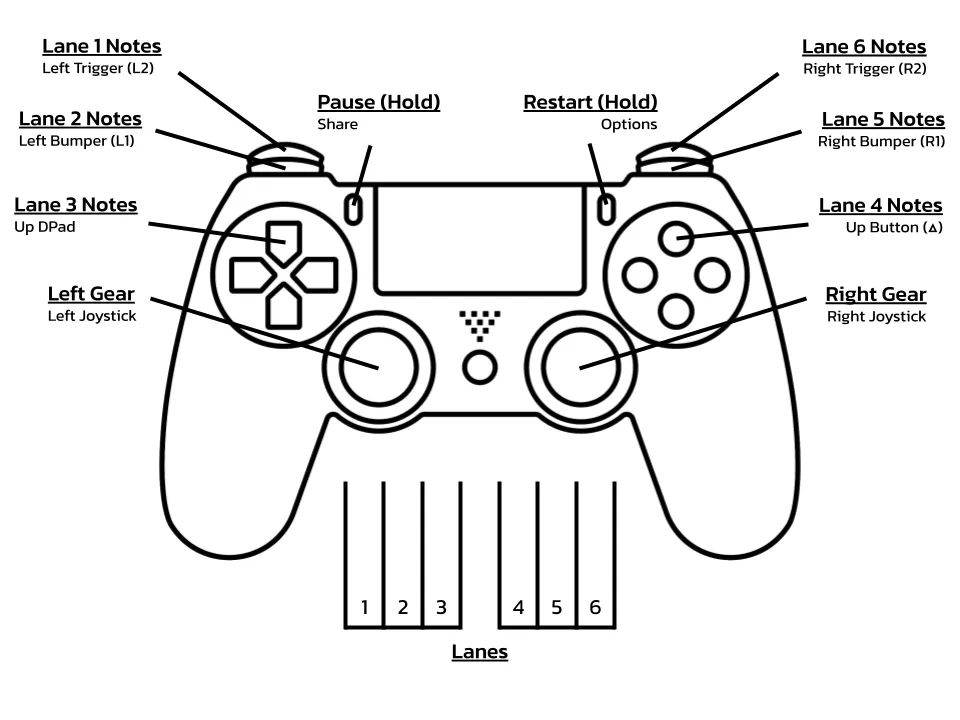
This statement leads nicely into the next factor that makes crossgears possible: of the two inner lane notes and two gears (4 inputs total), up to 2 of these inputs can be hit simultaneously. This factor may initially seem given based on the previous one. Of course, the player can hit inner lane chords (3-4), gear chords (LeftGear-RightGear), and inner lane and gear chords on opposite sides (3-RightGear or LeftGear-4). However, there is one combination of notes that this statement supports that might surprise you: an inner note and inner gear on the same side. (3-LeftGear and RightGear-4). You might wonder how this is possible?
By reaching across! If the player is holding down the left inner lane with their left thumb, they can reach their right thumb across the controller to hit a left gear. Conversely, if the player is holding down the right inner lane with their right thumb, they can reach their left thumb across the controller to hit a right gear.
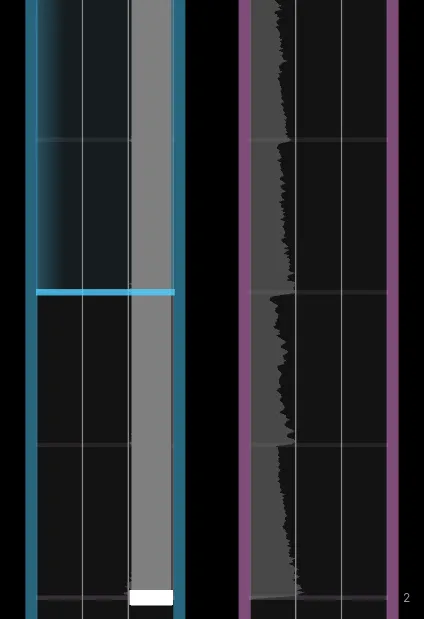 | 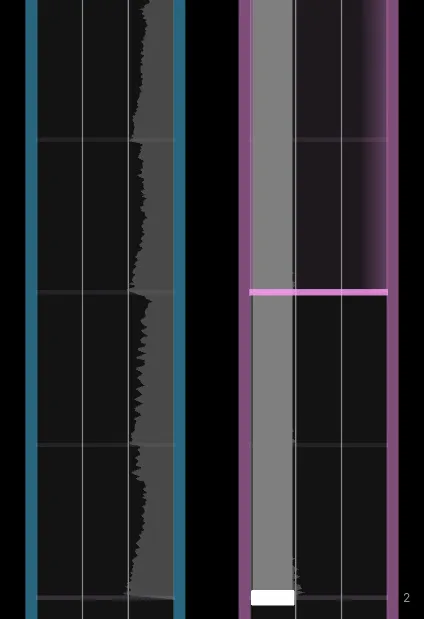 |
|---|---|
| Left Crossgear | Right Crossgear |
Crossgear Definition
By definition, a crossgear is a combination of notes where either thumb is unable to hit a gear due to being occupied with an inner lane tap or hold on the same side, requiring the thumb from the opposite hand to reach across and hit it.**
You may notice that the Thumb Input Principle suggests that certain patterns cannot be hit by controller players; this is indeed the case.
These note combinations are all controller-incompatible!
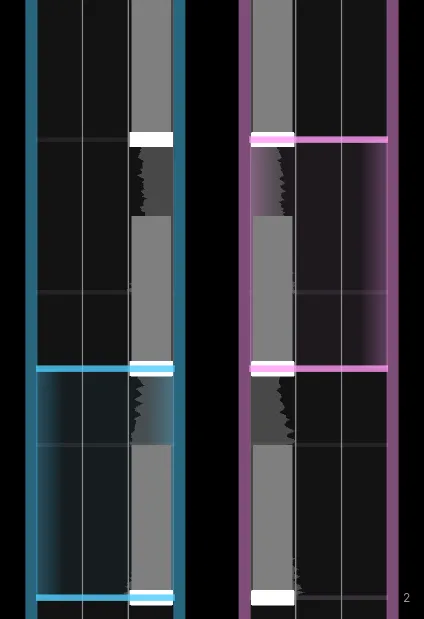
Thumb Input Principle, continued
Of the two inner lane notes and two gears, combinations of 3 or 4 of these inputs cannot be realistically hit by controller players (without even more advanced tech).
Although crossgears can technically always be hit, not all crossgears are fair game. Controller players need time or positioning queues in order to react to crossgears ahead.
While the most basic crossgears are defined as the combination of two notes, there are actually many ways that crossgears can be built upon, made more unique, or made easier to hit for controller players, especially on sightread. This includes deciding between tap and hold inputs, combining crossgears with middle / outer lane notes, and alternating between crossgears and non-crossgear notes.
Tap and hold crossgears, despite requiring the player’s thumbs to be in the same places, have very different feels and use cases. Tap crossgears are crossgears where the tap note or hold note must be hit simultaneously as the gear. While these crossgears are technically hittable, they require more sudden movement and are harder to sightread. Additionally, some charts will also use previous note placement to prepare the player to hit tap gears, making them more readable.
On the other hand, hold note crossgears are crossgears where a hold started on an earlier beat overlaps a gear, requiring the player to maintain the hold note while reaching a thumb over to hit the gear. Hold crossgears provide their own indication through the hold note input, making them easier for controller players to read and hit. They also have one finger stay in place, decreasing the suddenness of movement.
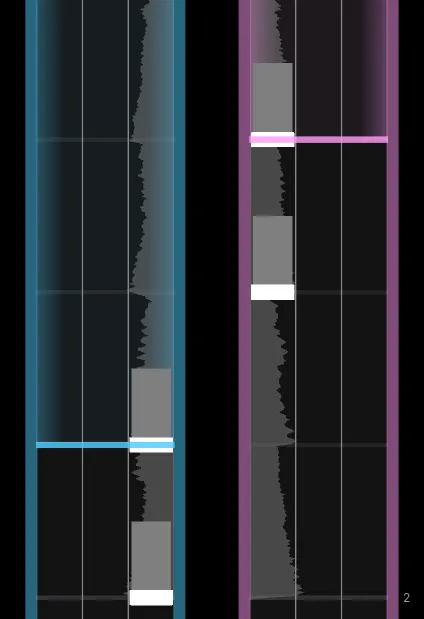 | 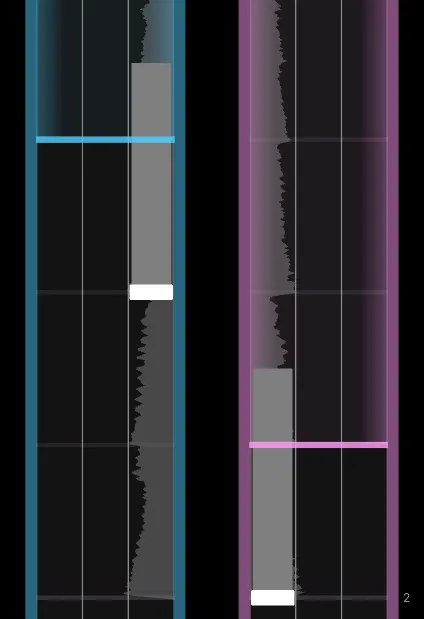 |
|---|---|
| Tap Crossgears | Hold Crossgears |
While additional inner lane taps and gears cannot be added to a crossgear without making a controller-unfriendly pattern, outer lane and middle lane taps (1, 2, 5, and 6) can be added without creating impossible patterns. Adding additional notes for the player to hit simultaneously with a crossgear can make for more interesting and unique patterns.
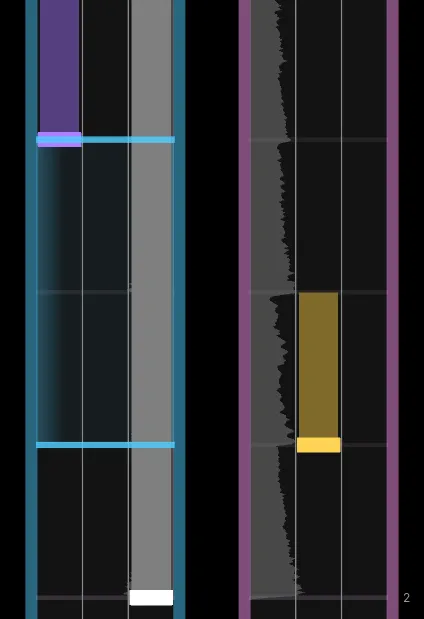
A very dynamic form of movement that you can do with crosshands is that you can alternate between gears that create a crossgear and gears that do not (i.e. the gears alternate what side they are on). This creates back-and-forth thumb motion that is very satisfying to perform. With that said, consecutive crossgears on the same side can feel fun to hit as well.
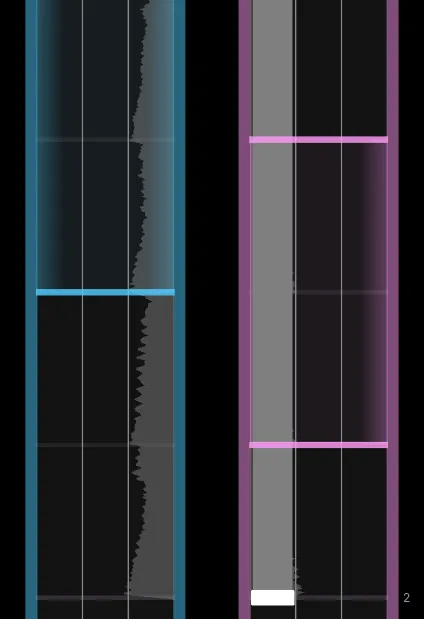
A common idea that newer charters will state when encountering crossgears is that crossgears only affect the experience of controller players. This is based on the fact that poor consideration of crossgears can make a chart unfair or even impossible on controller. This is a reasonable idea, but it misses a part of the picture. Usage of crossgears is not just a matter of compatibility; it is also a matter of expressiveness.
On a controller, crossgears are very dynamic and carry a lot of emphasis. This emphasis is supplied by the motion of the thumb across the controller. At faster speeds, crossgears in isolation can make for a very fun and mechanically interesting section for controller players. This emphasis can be lesser if the section’s patterning is slower, as it gives the player more time to get their thumb in position before hitting the gear.
On the contrary, crossgears typically feel the same as chords or single-handed LN patterns. The emphasis that controller players experience when hitting crossgears at fast speeds is often lost on keyboard players. As with all gears, the difference in visual presentation provides some emphasis, but not nearly as much as controller players feel.
With these factors in mind, there are three approaches you can take to work around this issue, many of which are employed by base game charts:
This is a non-comprehensive list of base-game charts that use crossgears. These charts’ incorporations of crossgears exemplify many of the above concepts, so it may be helpful to use them as reference:
Crossgears have equal opportunity to be used well and poorly by charters. Thinking about the above concepts when charting can ensure that your usage of crossgears is fun and fair across multiple playstyles.